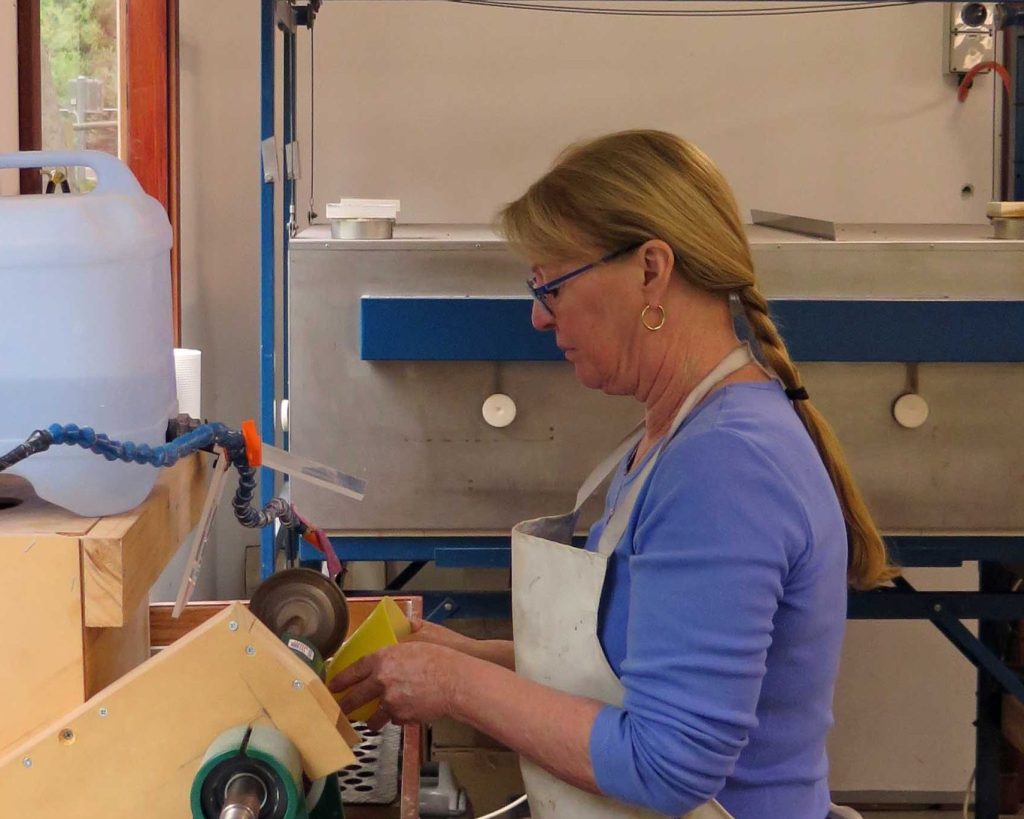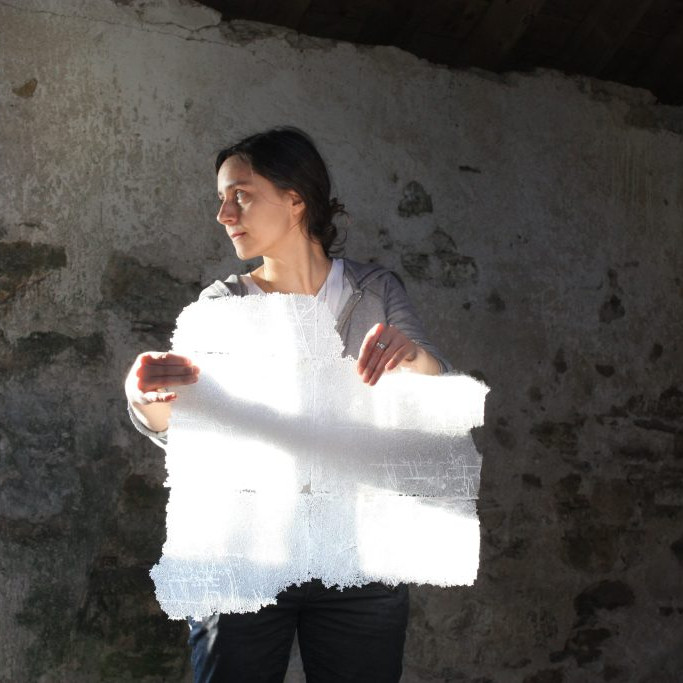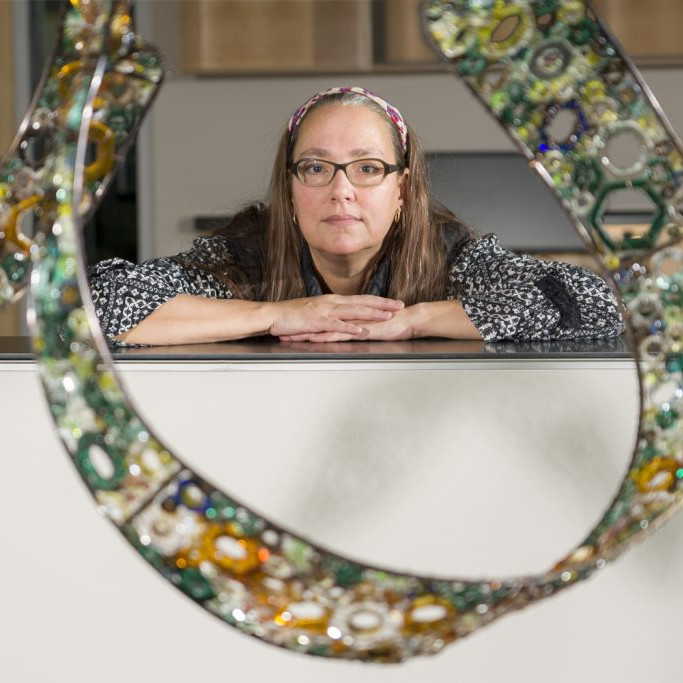Anne Sorensen Glass Artist - Western Australia.
You have been fortunate in having a mentor, discuss how this came about and how important it has been in your artistic career?
In 2013 I was fortunate to be selected to attend a Master class at Canberra Glassworks. The teachers were Klaus Moje and Kirstie Rea, artists who work internationally. During an interview with Klaus, he suggested I developed surface techniques. I applied for a grant with Country Arts WA and approached Kirstie to be my mentor, she has vast experience teaching and surface technique is a large part of her practice. This resulted in a twelve month mentorship. I worked at Canberra Glassworks with Kirstie for one week, she taught me to carve on a lathe. We went to exhibitions in Canberra, and discussed glass at length. Later in the year, Kirstie stayed at my home and worked at my studio for one week. She helped me with ways to develop new work, cold work using hand tools, and also further instruction on my lathe. During this year we exchanged emails and discussed my progress. Having an artistic mentor has expanded my thought process when developing new work, understanding why I create as I do. It is an ongoing privilege to have Kirstie as my mentor.
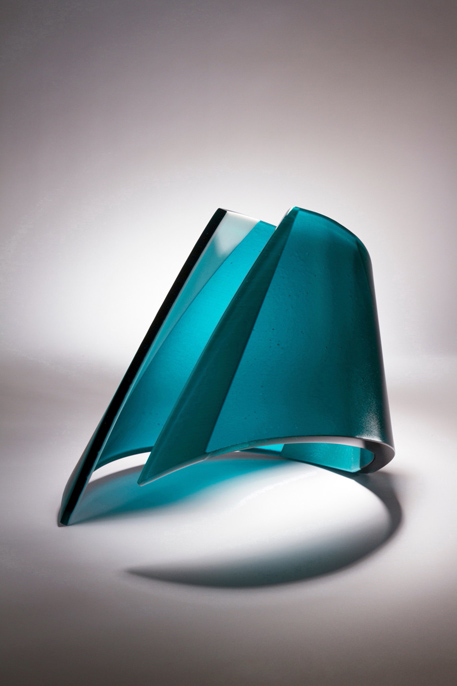
Consanguine, 30 x 30 x 25cm
Can you take us through the technical process of Carved Black Bowls?
The Carved Black Bowls begin as three circles of 3mm glass, 200mm diameter. These are fused together. The next firing is a very slow slumping firing, with the circle of glass suspended on a ceramic ring. With heat and gravity, the glass is slowly stretched to a point where I am happy with the form. I then switch the programme through annealing to the next cooling stage. The flange which remains on top of the glass is sawn off and the edge of the bowl polished, the base is ground and polished to create a base to stand on. The glass is then sandblasted, the surface carved and hand finished.
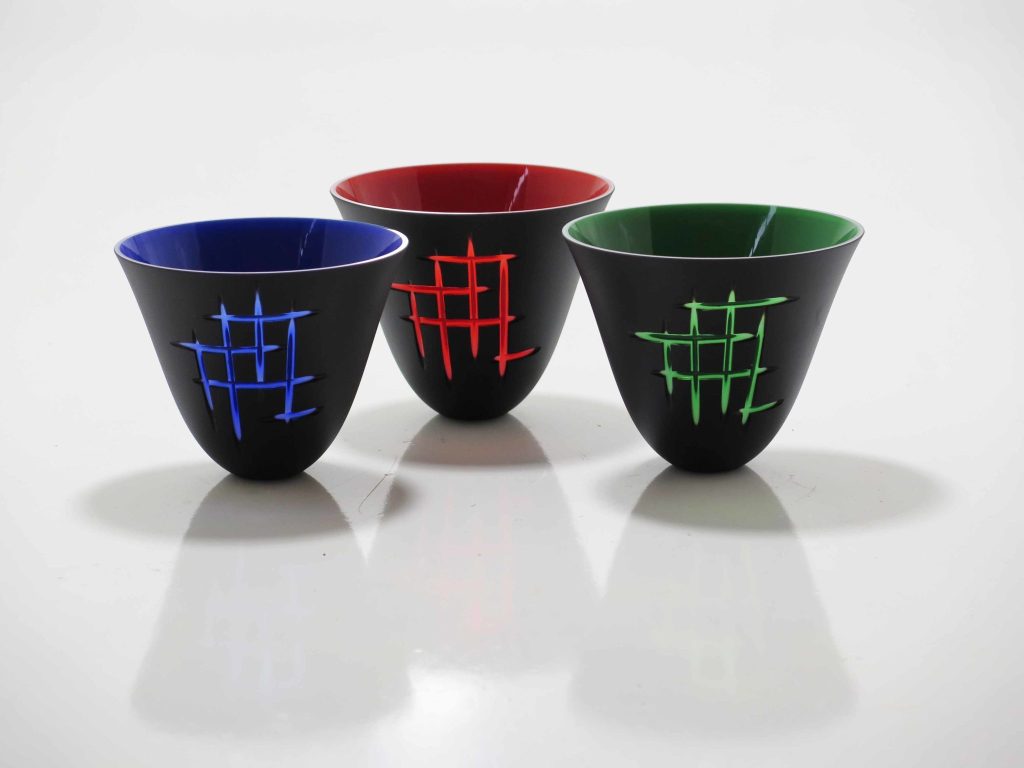
Black Bowls
Many of your pieces reflect your environment discuss this in relation to ‘Kangaroo Paw’.
I was born in Tasmania, my Mother was a fabulous and devoted gardener. Our gardens were always beautiful cottage gardens. On moving to Western Australia the difference in the weather and therefore the plant life has always impacted on me. The Kangaroo Paw in particular is so architectural in its form, and the flower complex. They are incredibly beautiful, and as with all Western Australian natives, amazing survivors in very harsh situations. The Kangaroo Paw is also the floral emblem of Western Australia.
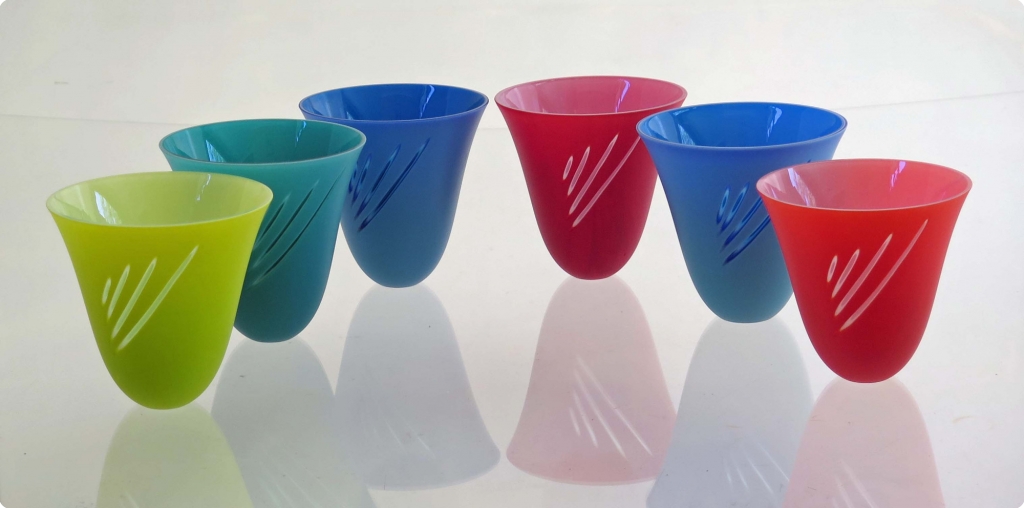
Kangaroo Paw
Can you tell us about some of your larger works?
People are often surprised at the scale of some pieces. Glass is often seen as such a fragile material. Of course it is, but when working in glass 12mm or thicker, it is more resilient. The first works that I made up to 1100mm tall were the sails. Being able to twist the tips of the sails I feel adds an element of tension to the piece. Using opaque and transparent glass at this scale, I feel gives the viewer more opportunity to enjoy the light transmission, rather than if the piece were flat on a table. In recent years Barry has been sculpting timber. The original pieces the timber were sawn from our block. I have been designing pieces of glass to insert into the timber. These pieces have been purchased mainly by International travellers. They have been up to 1.8 metres tall.

Phoenix, 58 x 15 x 15 cm
Expand on the almost textile quality of some of your wall pieces?
Many years ago I began pre firing 9mm thick glass slabs, cutting it into strips, and moving them to create patterns. This is a difficult process as 9mm strips of 9mm glass are very difficult to cut and they frequently break, which is wasteful. I have recently been using stringers, which are very small threads of glass which are much easier to cut into 9mm strips when fired onto glass. I find the rhythm that can be developed using shading with stringer very satisfying. Also I have a particular love of stripes, they feel happy to me, especially when using bright colour, which I also love.
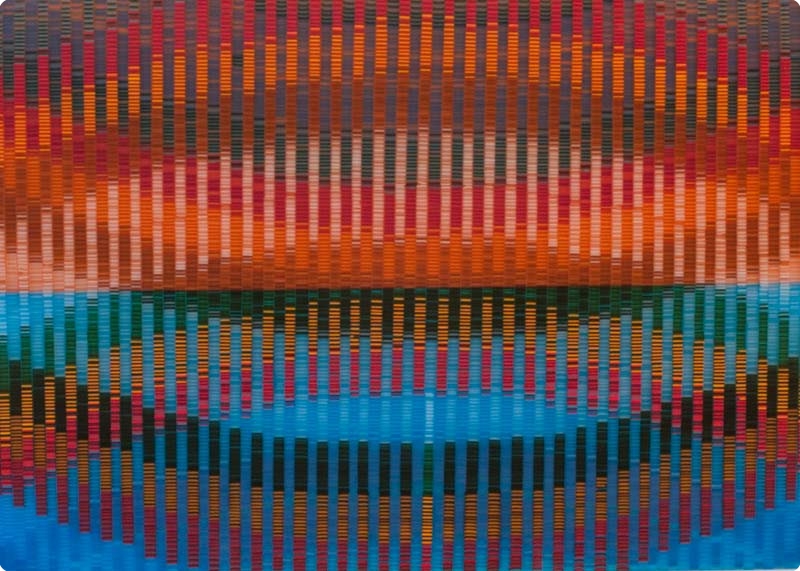
Dawn, 50 x 80 x 7cm
You do commissions, discuss how these have extended your own art practice.
Over the years commissions have become a large part of my practice. I have had extensive experience working with Interior Designers creating one off pieces for clients. This very often means developing new work, and working in a different colour palette, to suit their décor. I have also produced many awards for many companies that have been presented in Australia and Overseas.
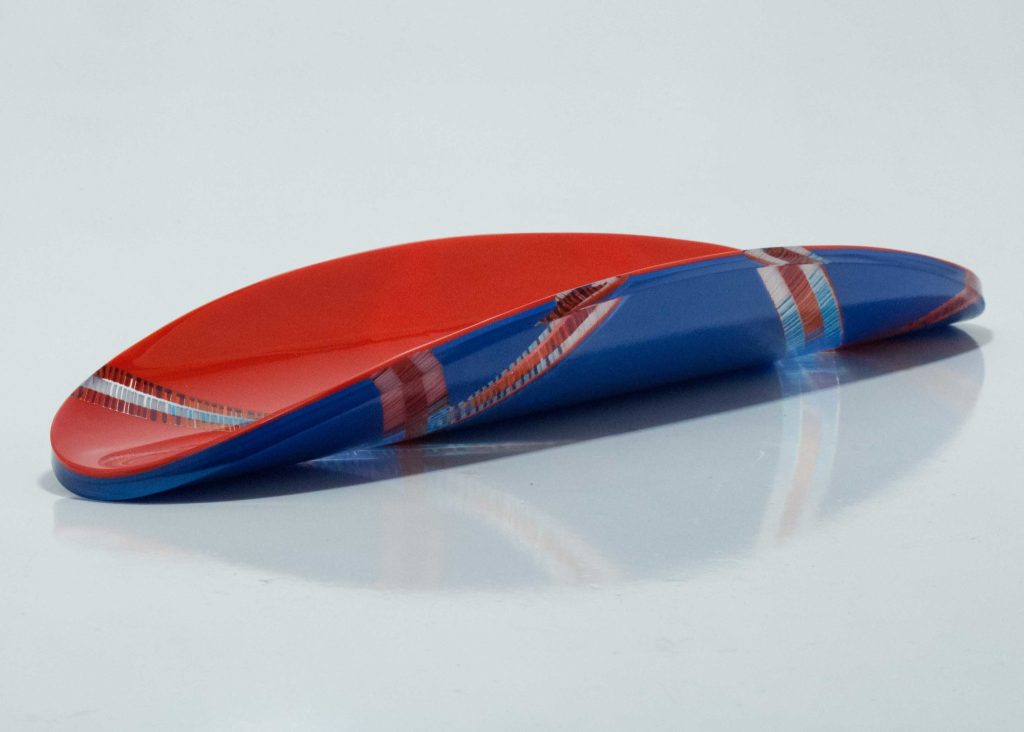
Flame Coolamon, 58 x 16 x 9cm
The importance financially and becoming better known of major commissions.
Major commissions give me the opportunity to spend more time developing an idea in conjunction with the client. A time for testing and experimentation to create a unique object for unique situations is challenging and fulfilling.
The comment by the Judges from The York Society was…’ Glass is unforgiving but this artist has the ability to make shapes work to their will” discuss.
One of the things I love about working with glass is that there is the opportunity to play, there are forms that I have been making for ten years and they keep changing and developing all the time. I was delighted with this comment from the York Society Judges as the piece they spoke of was one of those forms, something I had begun years ago and kept making and pushing to its limit of balance. I enjoy using metal molds, and allowing heat and gravity to shape the glass rather than forming glass into a mold.
Can you take us into your workshop and explain the equipment that you and Barry have?
I have a beautiful workshop, built by Barry, with large windows, which means I can enjoy the native gardens of our property during my working day. I have four kilns, all different sizes, I use the most suitable, depending on the work I am doing. A lathe, which is used for carving the glass, an engraver for small jobs, ceramic molds, metal molds, hand cold working tools and glass cutting tools. In Barry’s workshop we have glass cutting and grinding machinery, saws from 400mm to 100mm, linishing machinery to smooth the edges of glass, diamond flat bed grinder, a low speed grit grinder, hand held grinding tools and specially adapted carving tools.
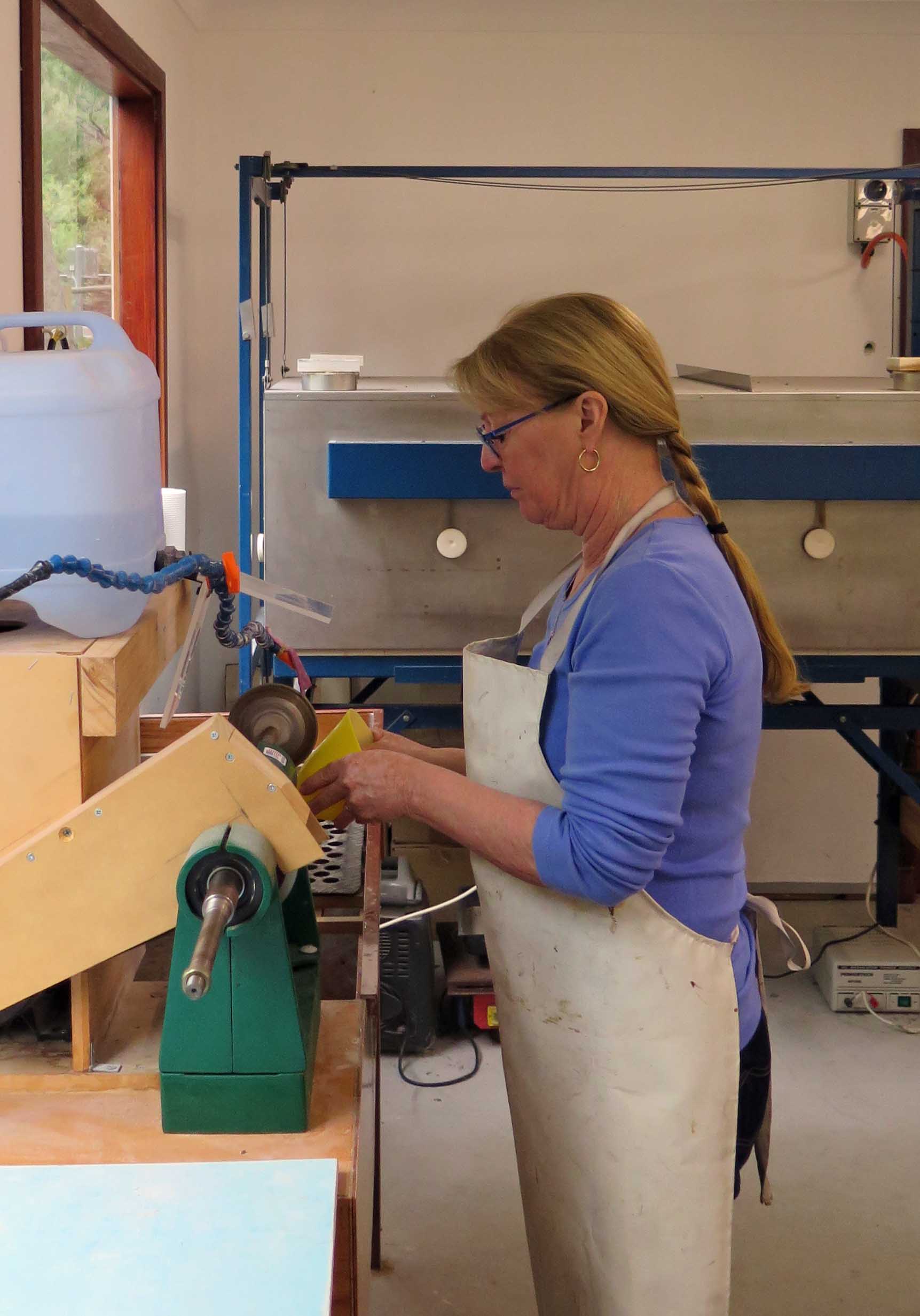
Discuss working with Barry Sorensen and how important this partnership is to the work you are able to produce because if the team work?
My partnership with Barry is paramount. Without his encouragement and support I could never have developed the work to this level. He polishes the work, has built the machinery to polish the work, built one kiln and is building another. Most importantly he always believes in me.
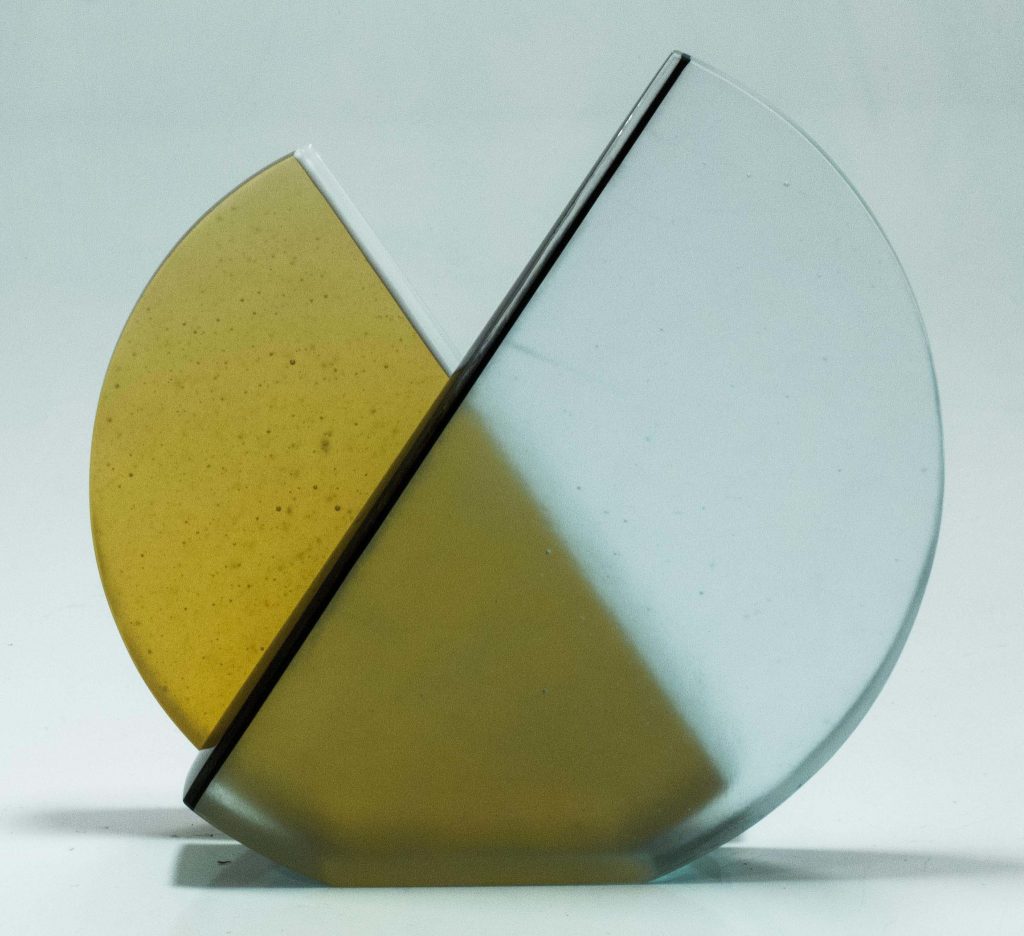
Chords, 28 x 35 x 30cm
Take us back to the work you did in stain glass, expand on one piece both technically and artistically.
This piece was designed in collaboration with an Art Teacher from St Mark’s Anglican School. The design was created to fit within many design requirements that were already established at the school. I was fortunate to work with some of the High School students and taught them lead lighting. During their Art classes they designed and built some elements for this piece, I then put them all together, with the main body of the work. This piece is in the foyer of their school, it also contains some fused pieces I created which were leaded into the piece.
Expand on the importance of modern Glass Art in today’s fine art Gallery culture.
It is as important to have modern Glass Art in fine art Galleries, as it is to have paintings in fine Art Galleries. In the future, these works will reflect the Artists and the Artworks of today’s society, hopefully as they have been treasured by collectors and people from all works of life. Artists need Galleries to be able to exhibit, and society needs artwork to lift its soul.
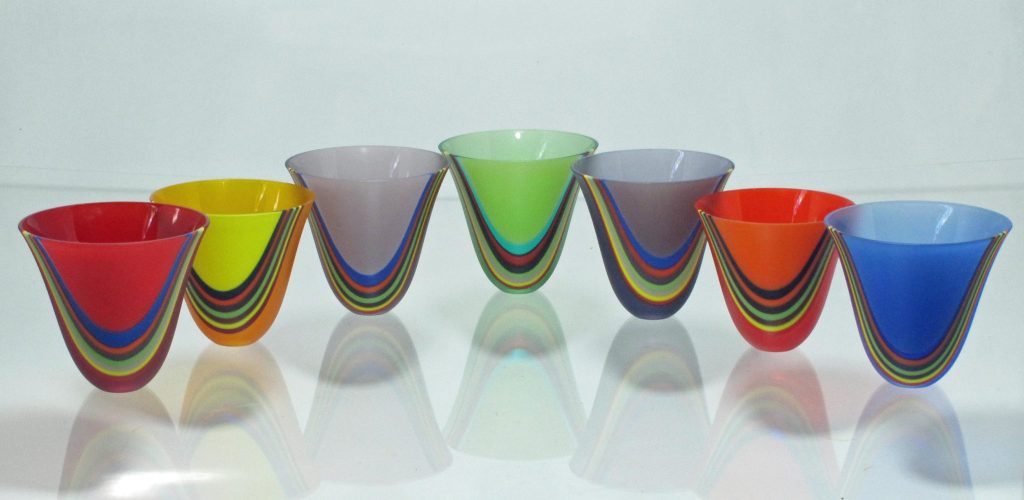
Rainbow Drop Bowls
Contact details.
http://www.annesorensen.com.au
anneandbarrysorensen@hotmail.com
Interview by Deborah Blakeley, May, 2016
Think a colleague or friend could benefit from this interview?
Knowledge is one of the biggest assets in any business. So why not forward this on to your friends and colleagues so they too can start taking advantage of the insightful information the artist has given?
Other artists you may be interested in:


